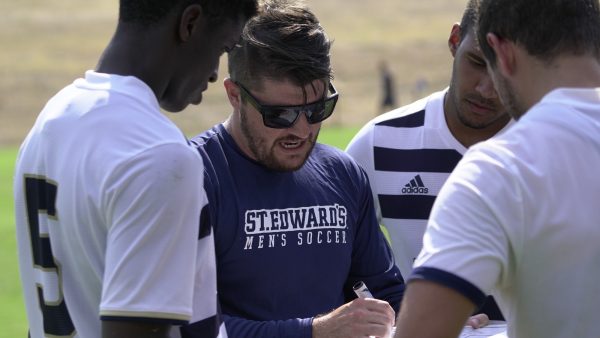You’re fired: UT athletic director punted for business-like approach
When you hear the name Steve Patterson, you may not know who that is. Patterson was the athletic director of a university just down the road from St. Edward’s University. That’s right, the University of Austin at Texas (UT) is where Patterson served for 22 months as athletic director, until he was fired on Sept. 15. To be exact, UT accepted Patterson’s resignation in a mutually-agreed decision.
There are many athletic directors across the nation that treat their job like a business. UT is no different. with their largest athletic budget in the nation.
According to a Washington Post article, UT took $161 million in revenue, but expenses totalled $163.8 million. However, there should be more to consider than just business when dealing with this much money and the lives of young adults.
Looking back at Patterson’s short career, it’s tough to say how he originally was a good fit for the position. Patterson did serve in several ranking positions in his career, but doesn’t have much experience in at the college athletics level.
In 2003, Patterson became team president of the Portland Trail Blazers, then the general manager of the team in 2006 for about a year. Patterson also worked with the Houston Texans football team, Houston Aeros hockey team and Houston Rockets basketball team.
However, UT is not a professional sporting team — it’s a university.
Patterson’s only experience at the university level came when he was named Arizona State University’s vice president for university athletics and athletics director in March 2012, after working in the front office for several years.
Patterson failed to do is to take more of the human element into account.
UT’s athletic department’s dilemma also happened at the University of Michigan just 11 months ago.
Dave Brandon was the athletic director at Michigan for four years. He is also the former CEO of Domino’s Pizza.
Brandon’s business-like approach began with plans to spend hundreds of millions of dollars on facility upgrades, but also increasing spending and salaries.
On the other hand, Patterson wanted more revenue for the already richest athletic program in the country. He raised prices for football games, even after the team came off a lousy 6-7 season.
Patterson also reportedly pushed coaches to raise more money for endowed scholarships and created a fan “loyalty” program to reward longtime donors while kicking some longtime season-ticket holders out of their seats.
“It’s just business” is a common phrase when it comes to big money decisions. But more times than not, these programs are dealing with people, not just business.
Follow Jacob and Amanda on Twitter for more! @Jacob_Rogers01 @Amanda620DG






